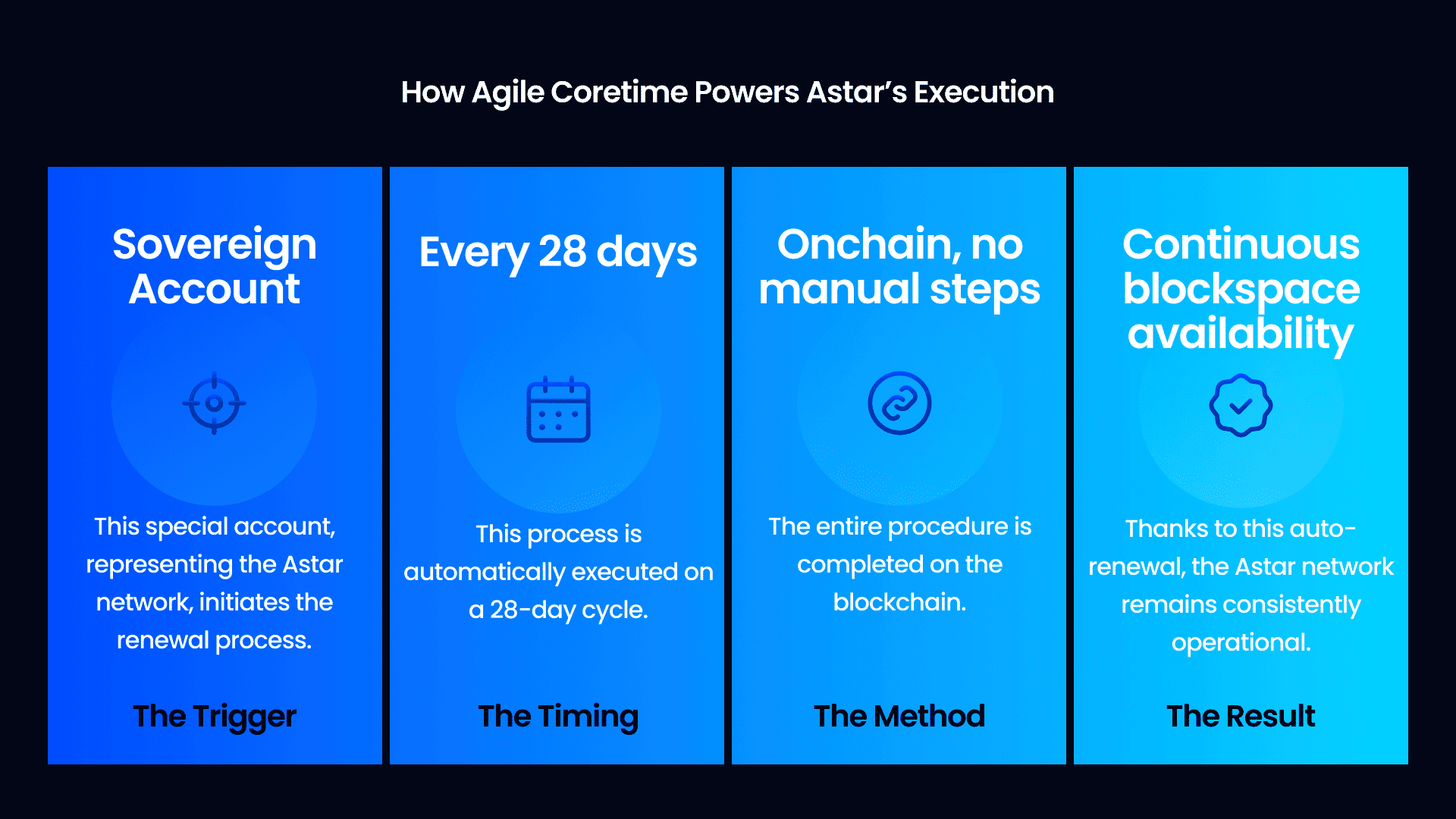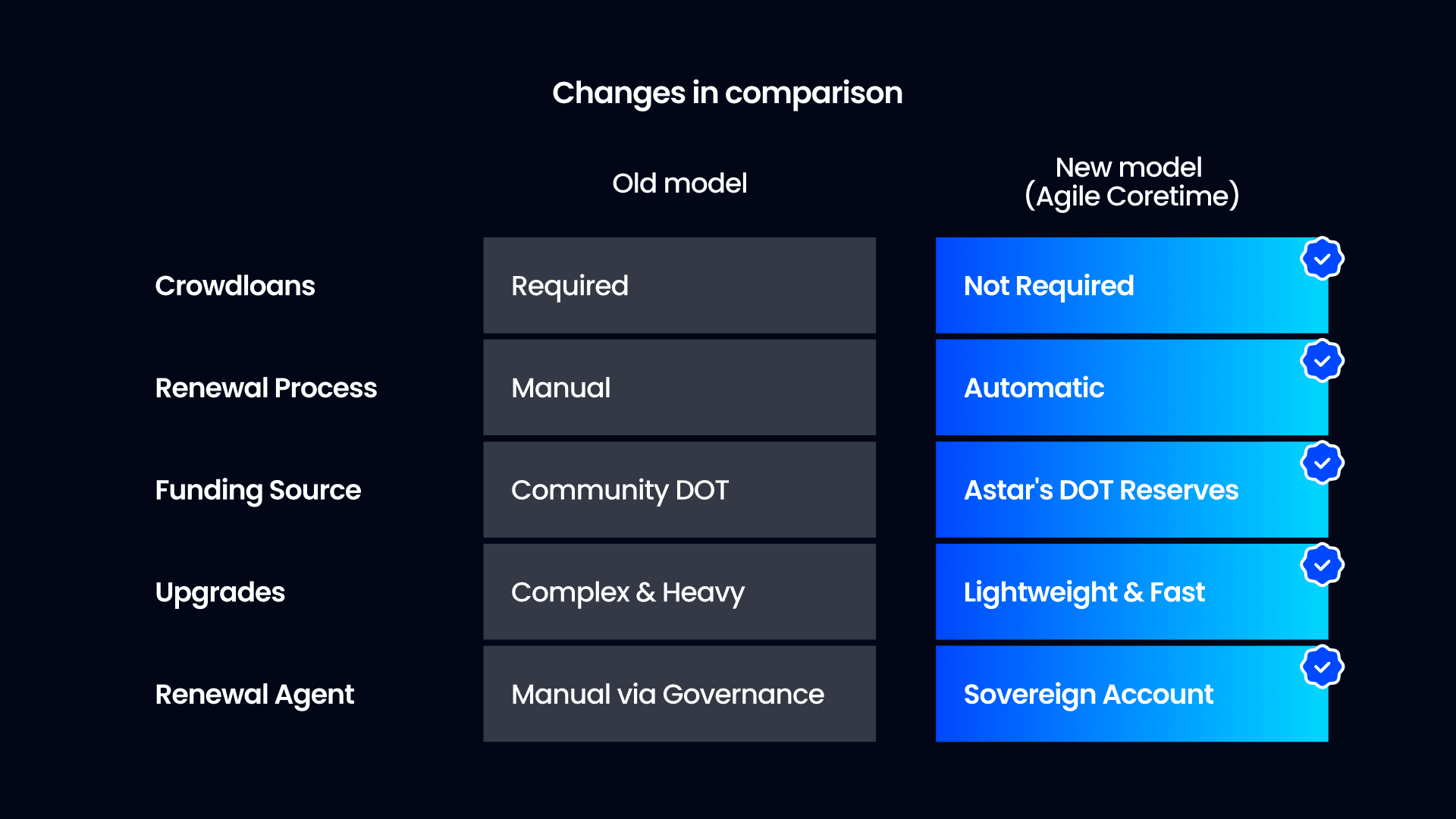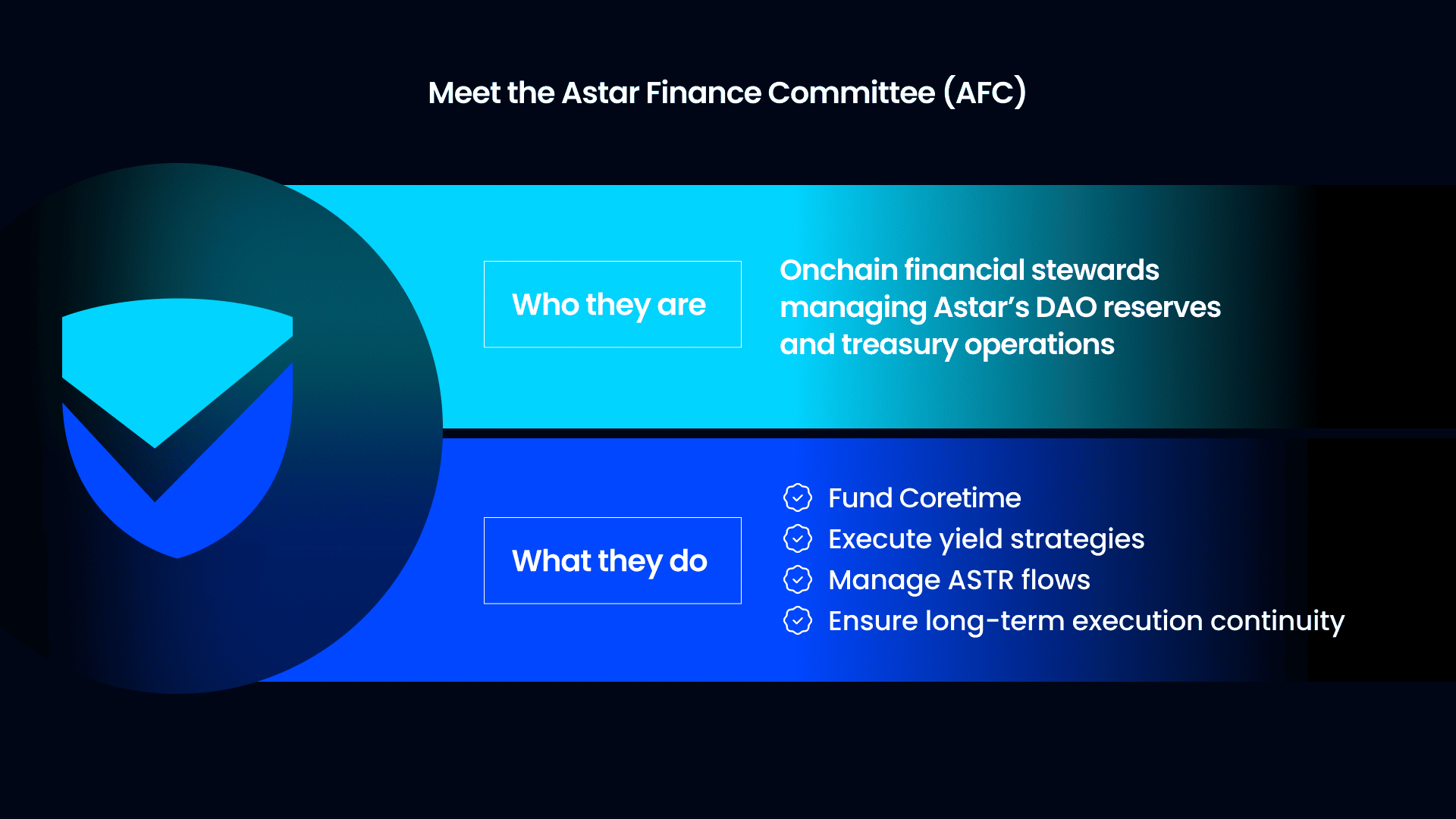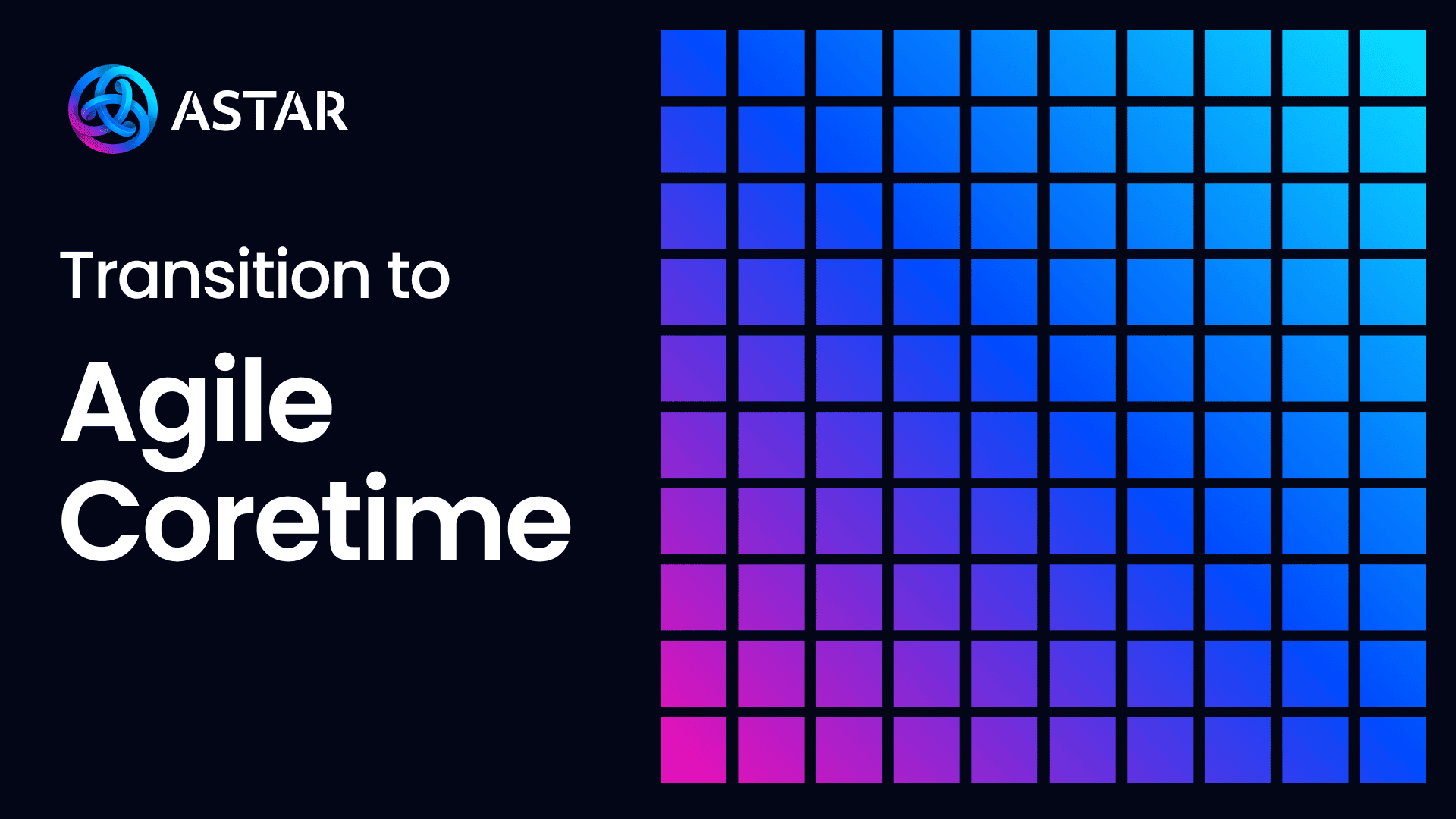Table of Contents
Astar is officially transitioning to the Agile Coretime model, marking a key milestone toward long-term sustainability and modular network design. This move reinforces Astar’s position as a future-ready network, built on efficient execution and governed by its community. By embracing Polkadot’s agile execution framework, Astar unlocks the ability to dynamically scale compute while minimizing overhead and reliance on external intermediaries. Instead of leasing execution slots through costly, long-term auctions, Astar now reserves compute in flexible 28-day cycles via Polkadot’s Agile Coretime model. This evolution allows Astar to shift away from rigid execution timelines and adopt a more responsive and efficient approach that better serves developers and users. This transition replaces the legacy parachain slot leasing model, set to expire in August 2025, which required upfront capital from the community, multi-month lease commitments, and rigid execution timelines that limited network agility.
Unlocking onchain agility for long-term sustainability
Agile Coretime is a key component of Polkadot’s evolving architecture that allows chains to reserve execution in short-term, flexible increments. Unlike the original parachain model, which required long-term slot auctions and crowdloans, Agile Coretime introduces a dynamic system where chains like Astar can reserve compute in 28-day increments. This removes the need for long-term leasing and allows the network to dynamically adjust blockspace based on actual usage. It reflects a broader shift in Polkadot's vision, from fixed infrastructure to programmable resource allocation, where execution becomes more modular and adaptable.

This means developers can continue building on Astar without worrying about network interruptions due to lease expiries or re-auctions.
In the previous model, many parachains needed community-backed funding to secure a slot, creating financial burdens and uncertainty. Agile Coretime replaces this with a predictable, pay-as-you-go model, removing the need for external fundraising mechanisms like crowdloans.
For Astar, this transition eliminates slot auctions and funding-related inefficiencies, such as idle blockspace. The network can now scale execution costs with actual demand while ensuring uninterrupted access to blockspace for both Substrate and EVM environments. The shift also reduces technical and financial friction for ecosystem participants, paving the way for more frequent, user-aligned upgrades.

This is particularly valuable for dApp developers, who can now build with confidence knowing that execution continuity is baked into the protocol’s design.
Governed and executed onchain
The transition to Agile Coretime was made possible entirely through onchain governance. Two referenda were passed to facilitate the switch: the first established a dedicated HRMP channel between Astar and Polkadot’s Coretime system chain to enable secure cross-chain messaging. The second authorized Astar’s sovereign account to automatically renew Coretime reservations every 28 days, ensuring seamless execution without manual coordination.
This means Astar now purchases Coretime just-in-time through recurring onchain logic with no human intervention required, reducing operational overhead and improving reliability.
This governance-led process reflects the growing maturity of Astar’s ecosystem. It also highlights the strength of onchain mechanisms in delivering meaningful protocol upgrades with full transparency and community involvement.
Sustained by the Astar Finance Committee
While governance charted the course, implementation was supported by the Astar Finance Committee (AFC), the onchain group managing network-level financial operations. AFC oversees DOT reserves generated from ecosystem investments and protocol operations, enabling automatic Coretime purchases and uninterrupted execution. The committee is composed of elected technical and financial stewards who ensure responsible treasury usage and onchain accountability. It operates under defined onchain mandates with transparency into proposals, votes, and outcomes.

The Agile Coretime upgrade was proposed by the Foundation and executed via Governance, in alignment with the AFC’s financial planning and responsibilities in generating DOT reserve to purchase Coretime. This collaboration highlights Astar’s commitment to decentralization and onchain execution.
As the network scales, the AFC will continue to play a key role in aligning costs, performance, and sustainability across both layers by enabling timely, programmatic Coretime purchases.
What’s next
With Agile Coretime now live, Astar enters a new phase of sustainable growth. This model allows the network to fine-tune execution based on actual usage, optimize costs, and prepare for long-term utility across the Superchain and Soneium.
Onchain governance will guide future upgrades, ensuring they are executed transparently with active participation from both community members and ecosystem developers, keeping Astar’s direction community-driven and open.
By embracing Agile Coretime and strengthening onchain governance, Astar is laying the groundwork for a truly modular, cost-efficient, and interoperable multichain future, one that can evolve with the needs of builders and scale execution dynamically, without compromising on cost or decentralization.
Stay tuned as we continue evolving toward a more modular and sustainable multichain future.

